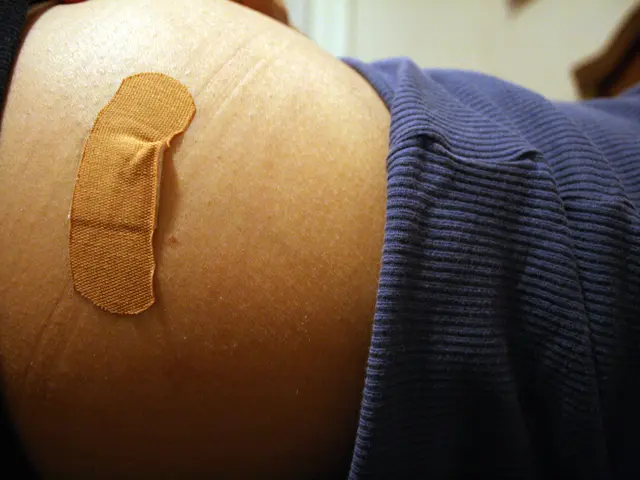Tougher Toy Safety Regulations on the Horizon for the EU 🇪🇺
The European Union proposes measures to ensure child safety in toys.
Get ready for a playtime overhaul! The European Union is revamping the rules for toy safety in a bid to shield kids from harmful chemicals and safeguard their overall wellbeing. Here's the lowdown on the long-awaited changes.
Health Risks Be Gone
Say goodbye to toys laced with hazardous chemicals that can disturb hormonal balance, pose cancer risks, or alter DNA. The new rules ban these harmful elements from making an appearance in toys sold within the EU.
Stricter Safety Standards
Manufacturers of toys will now be obliged to conduct thorough safety assessments, scrutinizing each potential risk before introducing a new product to the market. Furthermore, they'll need to furnish a digital product passport, complete with a QR code that displays the toy's compliance with the established safety standards.
Recognizing Rogue Toys
Even with stricter regulations in place, dodgy entrepreneurs might still try to skirt the rules. To help consumers avoid these illicit products, Europol offers some guidance: if the price seems too good to be true, if mandatory labels are conspicuously missing, if the toy is instead packed in a clear plastic bag, or if the brand name or instructions contain spelling errors – steer clear!
Clamping Down on Counterfeit Goods
Alarmingly, roughly one in five items tagged as dangerous and booted from the EU market are toys. To combat the sale of these hazardous products, the new regulations aim to increase enforcement efforts, especially since 97% of the safety alerts in 2024 stemmed from manufacturers flouting the rules, particularly with regards to illegal phthalate use.
A Long-Overdue Revamp
The updated regulations have garnered support from various political forces, as the previous regulations hail from 2009. With a solid consensus on the shift from a directive to a regulation, the plan is for the new rules to be finalized by autumn 2025. The revised rules will go into force in 2029, providing manufacturers with a 54-month transition period to comply fully.
Healthier, Safer Toys for European Kids
BYE-BYE, HARMFUL CHEMICALS! The European Union is safeguarding children from chemicals like endocrine disruptors and PFAS, also known as "forever chemicals," while keeping parents informed about every toy in their little ones' lives.
Timeline
- Final Approval: Expected autumn 2025 after translation and formal adoption.
- Transition Period: 54 months from entry into force, with full compliance targeted around spring 2030.
Key Changes
1. Expanded chemical bans- New prohibitions: Endocrine disruptors, respiratory/skin irritants, and organ-toxic compounds join the existing restrictions on carcinogens, mutagens, and reproductive toxins.- PFAS restriction: "Forever chemicals" targeted under the regulation, with further specifics subject to final Parliament review.
2. Enhanced safety protocols- Mandatory evaluations: Comprehensive safety exams required pre-market, encompassing potential risks from digital components, such as data privacy in smart toys.- Digital Product Passport: Compliance verification traceability system implemented.
3. Enforcement hurdles- Online platform risks: Approximately 80% of non-EU-seller toys on platforms fail safety tests.- Persistent problems: 97% of 2024 safety alerts involved manufacturers evading regulation, particularly through illegal phthalate use.
The new regulations place increased responsibility on honest manufacturers while underscoring the need for stronger enforcement, particularly against e-commerce platforms.
References
- https://www.euractiv.com/section/consumers/news/eu-toy-safety-proposal-stalls-on-pfas-harmful-substances-decision-awaited/
- https://www.goodtoknow.co.uk/parenting/my-baby/it-s-toy-safety-week-here-s-what-you-need-to-know-865319
- https://www.reuters.com/business/healthcare-pharmaceuticals/eu-moves-tighter-toy-safety-rules-2021-11-23/
- https://www.theguardian.com/environment/2019/nov/21/tougher-eu-toy-safety-rules-to- banned-forever-chemicals
- https://www.politico.eu/article/europe-eu-toy-safety-plastic-harmful-chemicals-poison-preschoolers/
In the revised toy safety regulations for the EU, harmful chemicals like endocrine disruptors and PFAS, also known as "forever chemicals," are being targeted and banned. This shift, supported by various political forces, aims to ensure healthier and safer playtime environments for European children.
The new regulations necessitate stricter safety standards, with manufacturers required to conduct comprehensive safety evaluations before introducing new toys to the market and furnish digital product passports to verify their compliance with established safety protocols.
These revisions, however, underscore the need for stronger enforcement, as approximately 80% of non-EU-seller toys on online platforms fail safety tests. To combat the sale of hazardous toys, increased enforcement efforts are expected to focus on e-commerce platforms.
With the updated regulations focusing on expanded chemical bans, enhanced safety protocols, and improved enforcement, the goal is to shield kids from harmful substances and create a more secure, wholesome, and safe play environment.
The new regulations, once finalized by autumn 2025, will go into force in 2029, providing manufacturers with a 54-month transition period to implement the necessary changes. This overhaul in toy safety policy and legislation is a significant step forward in the general news, health-and-wellness, and politics discourse.










